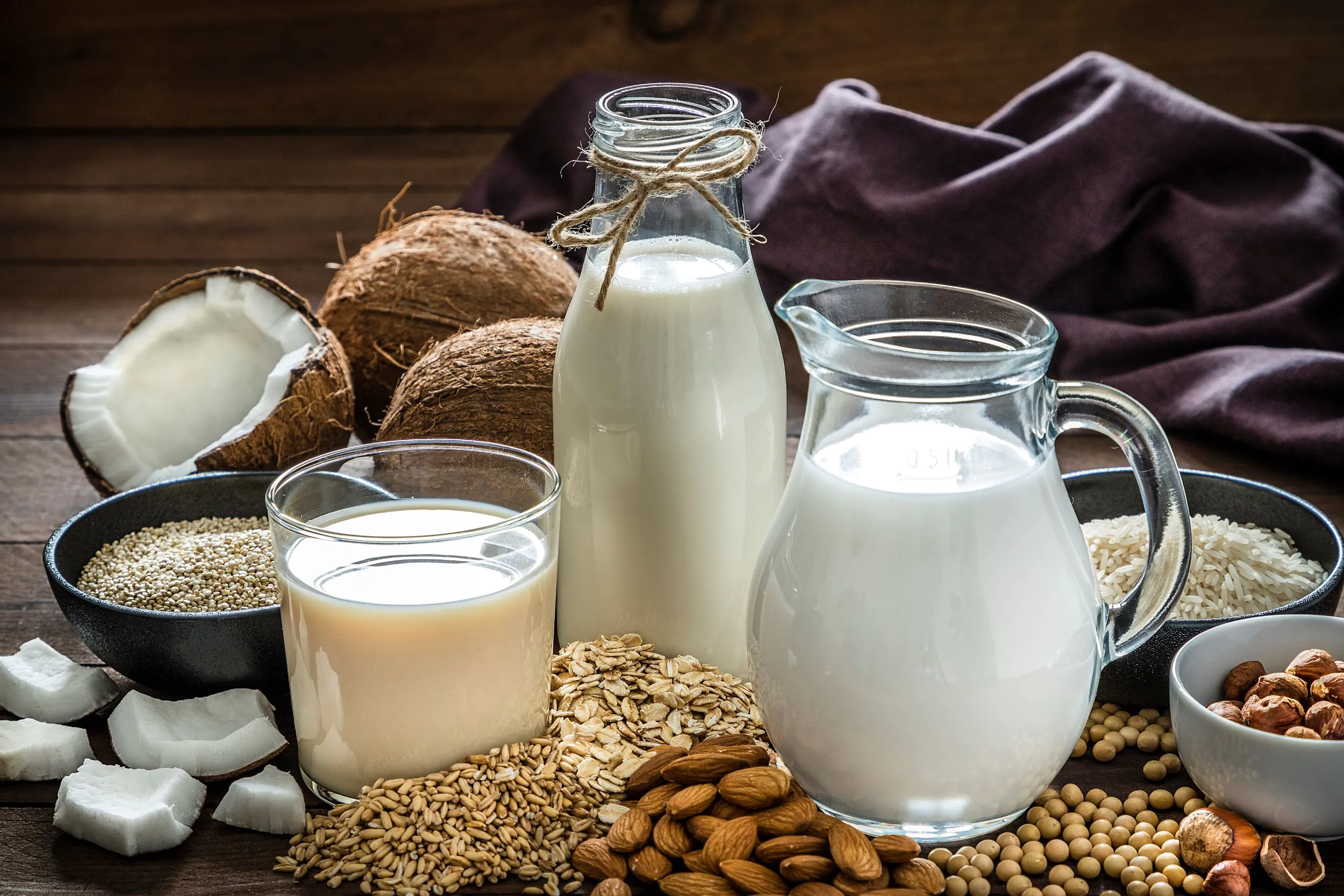The dairy alternatives industry is flourishing, with rising demand across consumer segments and a growing variety of products available. Consumers with allergies and other dietary restrictions are one source of demand, but they’re far from the only one. People are becoming increasingly concerned with both eating healthy and making purchasing decisions that benefit the environment, and are looking for good-quality products in a range of formats and flavors.
Over half of consumers worldwide seek out healthy ingredients in their food, according to Euromonitor, and almost a third are willing to pay more for foods boasting health and wellness qualities. In the US, most people who drink non-dairy milk choose to do so because of the taste, and more than half choose it as a sustainable alternative to cow milk. Globally, close to half of consumers have made changes to their diet in order to make sustainable choices, with more than a third choosing to seek out brands with ethical practices.
With sustainability a growing concern worldwide, many consumers are choosing to avoid products that come from cows due to the animals’ significant impact on the environment. The global dairy industry is one of the largest contributors to greenhouse gas emissions, and requires a significant amount of water and land. Almond production also consumes a lot of water, but produces much less greenhouse gas, while other plant-based dairy alternatives score better in terms of both emissions and water useage.
Because of increasing popularity among multiple types of consumers, the market for plant-based dairy products continues to grow despite recent supply chain disruptions with 4% growth in 2022 and a predicted CAGR of 4.1% between 2022 and 2027 according to Euromonitor. Manufacturers are coming closer and closer to producing foods that are indistinguishable from traditional dairy products. Ingredients being used as the basis for dairy alternatives include peas, fava beans, chickpeas, hemp, algae, and more.
France Gives Plant-Based Dairy a Boost
Earlier this year, the French government committed to investing €8.3 million in a new project to benefit plant-based dairy innovation. AlinOVeg involves six major players and has a total budget of €11.4 million. Roquette, Agri Obtentions, Eurial, Greencell, INRAE and the Université Lumière Lyon 2 will collaborate over the next five years to develop a plant-based sector of the French market focused on pea and fava bean protein and to provide healthy and sustainable dairy alternatives for products such as cheese and desserts.
New Milks Hit the Market
Studies show that many consumers perceive plant-based milks to be equivalent in nutritional value to cow milk, when in fact cow milk tends to be more nutritional. This belief is helping to drive demand for these milk alternatives, with Americans continually drinking less cow milk every year. However, there are also opportunities to fortify plant-based milks and increase their nutritional value, and many companies are working to do just that. Innovators are also investigating new ingredients from which to make dairy alternatives, leading to a growing variety of products on the market.
A Wide Range of Base Ingredients
Plant-based milks are no longer limited to just a small number of familiar types such as almond and soy. There are now a wide variety of different milks on the market, offering a range of qualities and benefits and allowing consumers with different allergies, dietary requirements, and preferences to choose options that suit them best.
- US company Hope and Sesame has developed a range of sesame milks in both chilled and shelf-stable formats, advertising nutrition levels comparable to dairy milk. The products include complete protein, essential amino acids, vitamin D, and calcium, and are available in six different flavors.
- Tomorrow Farms offers the animal-free Bored Cow product line, with milks made from microbial proteins that behave just like cow milk that are available in multiple flavors.
- Swedish company Dug has launched a potato-based milk that includes pea protein, chicory fiber, and rapeseed oil in its list of ingredients.
Oat Milk Remains a Crowd-Pleaser
Oat milk has been a popular dairy alternative for several years now, and its performance remains strong. Being lower in fat and higher in fiber than cow milk, it is easier to digest, and also contains more protein than other dairy alternatives. Its usage has become common enough that beverage businesses such as Starbucks have made it a regular part of their drink portfolios.
AI and Machine Learning Innovations
Chilean food tech company NotCo is using AI and machine learning tools to create plant-based products that mimic the qualities of their animal-based counterparts. An AI program analyzes animal-based products at a molecular level and determines how to reproduce them using plant ingredients. The company boasts that its NotMilk product behaves just like cow milk, with the same taste and texture, and is available in similar varieties: whole, 2%, 1%, and chocolate. Its ingredients include pea protein, chicory root fibre, pineapple juice, coconut oil, sunflower oil and cabbage juice.
Making Plant-Based Cheese More Widespread
Swedish food company Oatly has partnered with Philadelphia food scientists to create an oat-based version of the famous cream cheese spread. The product premiered in Philly early this year before being launched to a wider market.
Meanwhile, Dutch company Willicroft is using dairy farming techniques in combination with plant-based ingredients to make its own range of cheeses. These bean-based products boast carbon-neutral packaging and come in several varieties, including young Dutch, Greek white, fondue, and more. Willicroft switched away from its original choice of cashews due to the high level of emissions created by their production. The company also works with local governments and farmers to convert land used by dairy cows into bean fields that will provide ingredients for its cheeses.
Getting Creative with Ice Cream
New Zealand company EatKinda has put a new spin on ice cream by making cauliflower the key ingredient. Using cauliflower that would otherwise go to waste, the company combines it with ingredients such as pea protein, chickpea flour, and pea protein to create a product that has performed equally well to conventional ice cream in blind taste tests. EatKinda’s ice cream is currently available in strawberry, chocolate, and mint chocolate.
Taking the Dairy Out of Chocolate
While dairy may not be an essential ingredient in chocolate — true dark and semi-sweet chocolates don’t use it — many chocolate products do include some amount of milk solids. Plant-based alternatives are therefore becoming increasingly common as consumers seek to reduce or eliminate their dairy consumption while still enjoying their favorite treats. Notably, confectionery giant Cadbury has recently introduced plant-based chocolates in several flavors, as has Lindt. Smaller businesses are entering the market as well, offering a variety of products with different levels of sugar and protein and available in a wide range of flavors.



